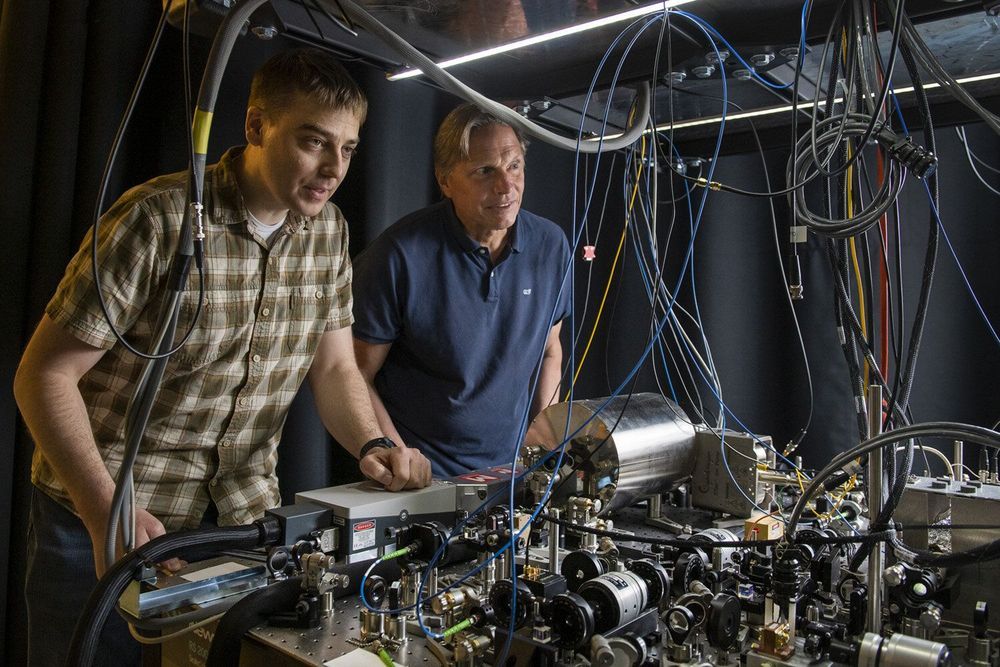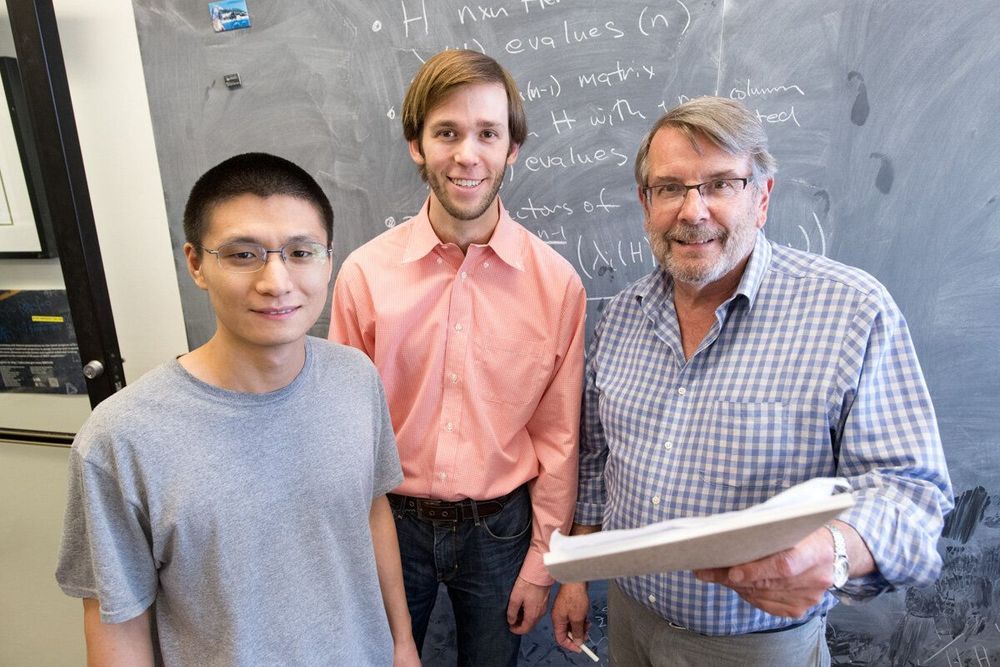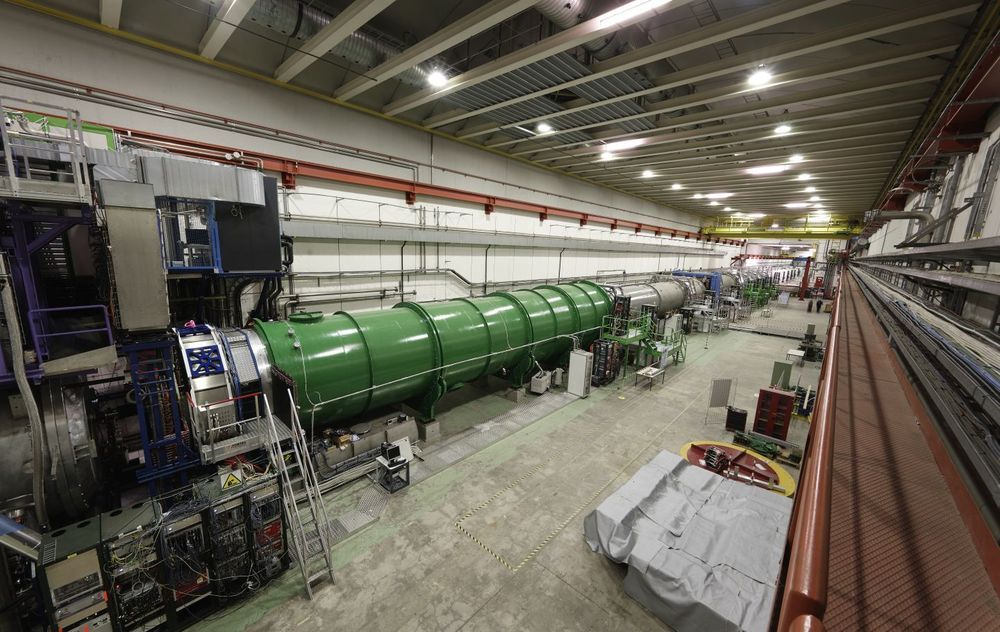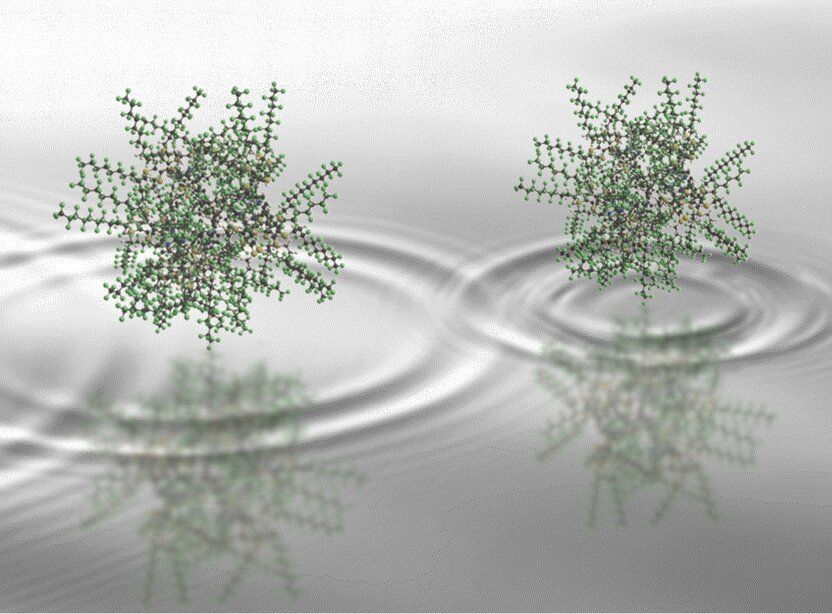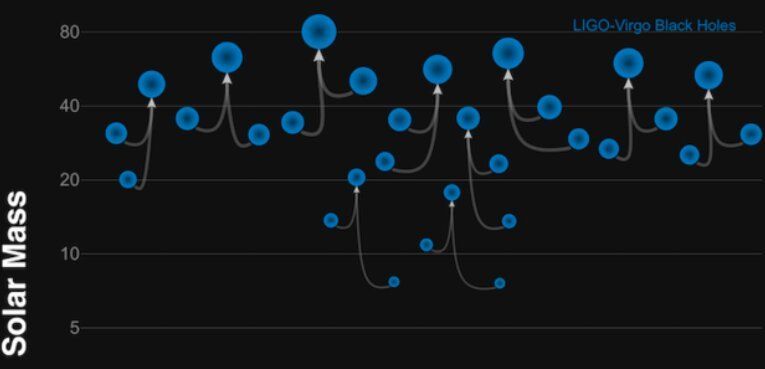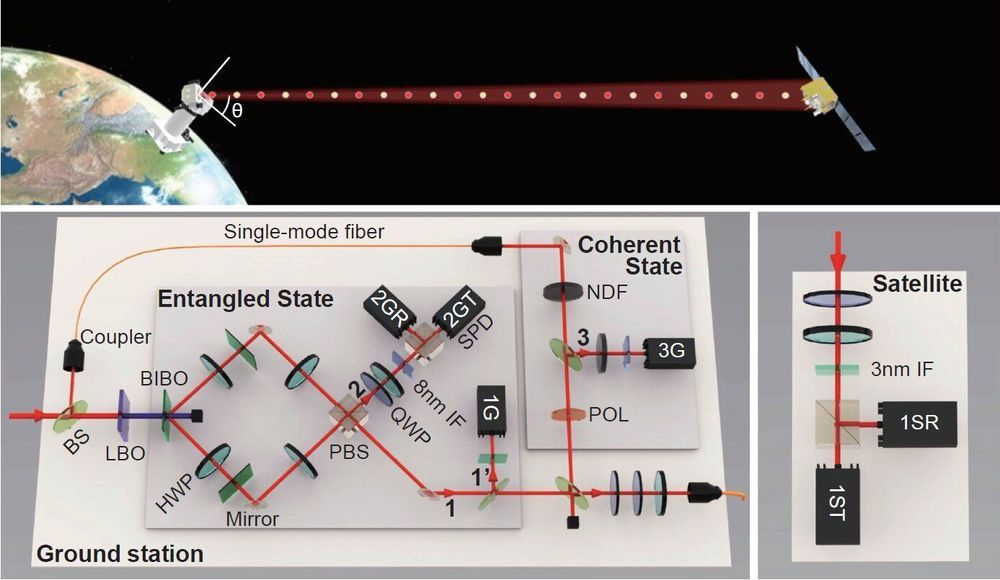Sep 26, 2019
A different kind of gravitational wave detector
Posted by Genevieve Klien in categories: cosmology, particle physics, quantum physics
Hidden deep in a basement at Stanford stands a 10-meter-tall tube, wrapped in a metal cage and draped in wires. A barrier separates it from the main room, beyond which the cylinder spans three stories to an apparatus holding ultra-cold atoms ready to shoot upward. Tables stocked with lasers to fire at the atoms—and analyze how they respond to forces such as gravity—fill the rest of the laboratory.
The tube is an atom interferometer, a custom-built device designed to study the wave nature of atoms. According to quantum mechanics, atoms exist simultaneously as particles and waves. The Stanford instrument represents a model for an ambitious new instrument ten times its size that could be deployed to detect gravitational waves—minute ripples in spacetime created by energy dissipating from moving astronomical objects. The instrument also could shed light on another mystery of the universe: dark matter.
Stanford experimental physicists Jason Hogan and Mark Kasevich never intended for their device to be implemented this way. When Hogan began his graduate studies in Kasevich’s lab, he focused instead on testing gravity’s effects on atoms. But conversations with theoretical physicist Savas Dimopoulos, a professor of physics, and his graduate students—often lured downstairs by an espresso machine housed directly across the hall from Kasevich’s office—led them to start thinking about its utility as a highly sensitive detector.
